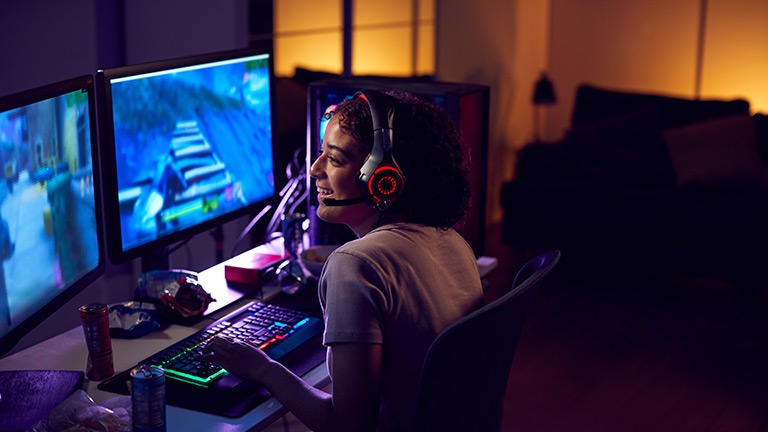In the dynamic world of video game development, porting games from one platform to another is as common as it is challenging. As developers strive to broaden their audience reach by making their titles available across various systems, the technical and creative hurdles they encounter can be substantial.
At Game Hut, we’ve been at the forefront of game development and porting for years, and we’ve seen firsthand the myriad of pitfalls that can turn a promising port into a cautionary tale. Understanding these pitfalls is key to avoiding the pitfalls that lead to unsuccessful transitions.
1. Underestimating the Differences Between Platforms: One of the most significant mistakes developers make is underestimating the technical and user experience differences between platforms. Each platform has its unique hardware capabilities, controller schemes, and user interface requirements. A game designed with the PC’s keyboard and mouse in mind may not translate well to the console’s gamepad or the touchscreen interface of mobile devices without considerable adjustments. Developers must deeply understand the target platform’s nuances to make the necessary adaptations, ensuring that the game feels as native and intuitive as possible to the new audience.
2. Ignoring Performance Optimization: Performance optimization is crucial in game porting. Games that run smoothly on a high-end PC might struggle on consoles or mobile devices with less processing power. Developers often fall into the trap of assuming that reducing graphical fidelity is a one-size-fits-all solution. However, optimization goes beyond lowering resolution or texture quality; it involves rethinking how the game handles rendering, physics, and even AI, to fit the hardware’s limitations without compromising the gameplay experience. Ignoring these aspects can lead to subpar performance, longer loading times, and a frustrating experience for players.
3. Overlooking the Importance of QA and Testing: Quality Assurance (QA) and extensive testing phases are vital in game porting, yet they are frequently underestimated. Porting introduces a whole new set of variables and potential bugs that weren’t present in the original version. Different hardware and software configurations can lead to unexpected issues, from minor graphical glitches to game-breaking bugs. A robust QA process is essential to identify and fix these problems before release. Skipping or rushing through this phase can result in a game that feels unfinished or broken, damaging the developer’s reputation and alienating the player base.
4. Failing to Respect the Original Game’s Vision: When porting a game, it’s crucial to maintain the essence and vision of the original title. Changes in gameplay mechanics, story elements, or visual style can alienate existing fans and detract from the game’s unique appeal. For instance, simplifying gameplay mechanics to fit the limitations of a less powerful platform might make the game more accessible but at the cost of alienating core fans who appreciated the original complexity. Balancing fidelity to the original game with the necessary adaptations for the new platform is a delicate art that requires a deep understanding of what made the game special in the first place.
5. Mismanaging Resource Allocation: Porting a game is not just a technical challenge; it’s also a project management challenge. Misallocating resources, whether it’s time, budget, or manpower, can derail a porting project. Overlooking the need for platform-specific optimizations, underestimating the scope of necessary changes, or failing to allocate enough time for thorough testing are common missteps. Effective project management, clear communication, and realistic timelines are essential components of a successful porting process.
6. Neglecting Platform-Specific Features and Opportunities: Each gaming platform offers unique features and opportunities that, if leveraged properly, can enhance the game’s appeal on that platform. For example, integrating with platform-specific social features, taking advantage of unique hardware capabilities (like the Nintendo Switch’s Joy-Con controllers), or optimizing for the platform’s preferred distribution model can significantly impact the game’s success. Ignoring these opportunities can result in a port that feels out of place or fails to engage the platform’s user base fully.
7. Overlooking Marketing and Community Engagement: Finally, the importance of marketing and community engagement in the porting process cannot be overstated. Announcing a port and keeping the community informed and excited about it is crucial for its success. Developers should not assume that a game that was popular on one platform will automatically attract interest on another without effort. Tailored marketing strategies and active engagement with the platform’s user community can help ensure a warm reception and build anticipation for the game’s release.
Conclusion: At Game Hut, we understand that game porting is an art form that requires a careful balance of technical skill, creative vision, and strategic planning. By being mindful of these common pitfalls, developers can navigate the complex process of bringing their games to new platforms more effectively. The goal is always to expand the game’s reach and bring its unique experiences to a broader audience without compromising on quality or losing sight of what made the game special in the first place. With the right approach, game porting can open up new horizons for developers and players alike, creating opportunities for more diverse and enriching gaming experiences across the board.

